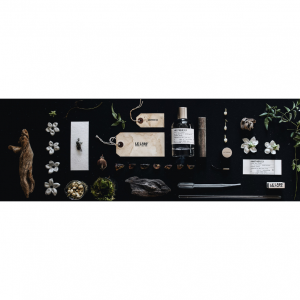
Gardenia Plant Care Guide: Growing Info & Tips For You (Popular Types+8% Cashback)
Gardenia Plant Overview 

Gardenia is a genus of flowering plants in the coffee family, Rubiaceae, native to the tropical and subtropical regions of Africa, Asia, Madagascar and Pacific Islands. With this geographic pedigree, it makes sense that these shrubs need and thrive in warm, preferably humid conditions. There are over 200 species of gardenias. The flowers are solitary or in small clusters, white, or pale yellow, with a tubular-based corolla with 5–12 lobes (petals) from 5 to 12 centimeters (2.0 to 4.7 in) diameter. Flowering is from about mid-spring to mid-summer, and many species are strongly scented.

Gardenias' waxy green leaves and fragrant white blooms make them a prized plant. Grown in tropical and subtropical areas as shrubs, gardenia must be grown as houseplants in northern climates. In the languid warmth of late spring and early summer, many gardens in the South are filled with the heady perfume of gardenias in bloom.
Popular Gardenia Types

One of the most popular gardenia varieties, this type has double flowers about the size of the palm of a hand. It begins to flower in early spring and may have random blooms throughout early fall. The large shrub is attractive even when it's not flowering, making it an ideal choice for borders and hedges.

Also a well-known gardenia variety, its flowers grow to 4-5 inches, and the shrub itself can grow to 8 feet. This type of shrub requires pruning to maintain a neat appearance and blooms throughout the spring.

The large double flowers on this type of gardenia make it a beauty. It's an old Gardenia cultivar, that has perhaps the largest and most fragrant flowers of all the common Gardenias. It is certainly among the most popular and best-loved of the species. The Miami Supreme may bloom into the fall and grows well inside in warm, sunny locations.

It's a compact cultivar that typically grows to 3-4' tall and as wide. It's particularly noted for its compact form, small leaves fragrant daisy-like white summer flowers (to 3" diameter), showy red seed capsules (hips) and excellent winter hardiness. Grif's Select was reportedly developed from seed obtained by Michael Dirr from the Beijing Botanic Garden.

It has a rounded, mounding habit growing 2 to 3 ft. tall and wide. Although one of the smaller shrubs, this type of gardenia commands attention. Although it does not have double flowers, the vibrant yellow stamens on these flowers are striking, and its leaves are large and shiny. Valued for its cold resistance, it is hardy to zone 7.

Great for edging and small pots, this type of gardenia only grows up to 12 inches tall. It spreads 2-3 feet, making it an ideal ground cover for warmer climates. Radicans Variegata has unique striped leaves.

This variety of gardenia is irresistible. Wonderfully fragrant, double white, 4- to 5-inch blooms are larger than any other variety. The first gardenia to bloom in spring, and it continues to flower well into the growing season. A superb compact evergreen accent shrub or container specimen, perfect for entryway plantings or in patio tubs, where the fragrance can be enjoyed.

If you want to get one, don't forget to sign up at Extrabux (What is Extrabux?) , then you can enjoy up to 8% cashback from Extrabux! Sign-Up Bonus: Free to join it & get $20 welcome bonus!
How to Care for a Gardenia Plant? (Tips)

Geography
Gardenias thrive in zones eight and nine, but are sensitive to cold and must be grown as houseplants or in nurseries throughout most of the United States. Gardenias are often found outside in southern regions. They are grown as ornamental shrubs in warm regions and as patio plants that are brought indoors in cooler areas.

Planting Season
When introducing gardenias into your garden, the perfect time to plant is in the spring and fall when temperatures are even and neither too hot or too cold. Container specimens can be summered outside and returned to the inside when weather cools in late summer or early fall.
Transplanting
Replant in larger pot at start of spring. Use potting soil mixed with small amount of ground bark or peat moss. Rootball should remain slightly above soil level. After last frost, move outdoors into partial sun, then over 2-3 weeks, into full sun. Bring indoors at first threat of frost. Be sure it will grow properly outdoors in your area before transplanting.
Sunlight
Gardenias need a lot of light, at least 6 to 8 hours each day, so choose the sunniest spot in your home for these plants. Windows that have a southeast exposure are a good choice, with the morning sun and sun throughout the day.
Water
You'll need to take a lot of care when watering your gardenia. Water just enough so that the soil stays evenly moist. Don't over water or the soil can easily become waterlogged or soggy. At the same time, don't let your gardenia dry out completely or the leaves of the plant may start to drop off. As well, once the roots become too dry it can be hard to revive them. During the winter months, when the plant isn't growing, you can water a little less, letting the plant dry out a bit more between watering. As a basic rule, check before watering. Stick your finger into the soil, about two inches deep. If the soil still feels moist, it's not yet time to water your gardenia.
Temperatures
Temperature is considered one of the most crucial aspects of growing a gardenia. When daytime temperatures are above 70 degrees F or if night temperatures are over 65 degrees F or below 60 degrees F, flower buds will not form. Keep your gardenia between 65 and 70 degrees F during the day and 60 to 62 degrees F at night.

Soil
Well-drained, acidic soil with a pH of 4.5 to 5.5 is ideal for gardenias, whether potted or in the ground.
Fertilizing
During the spring and summer when the plant is in full growth mode, fertilize your gardenia every two weeks. The best ratio of fertilizer for gardenias is 15-15-15: nitrogen, phosphorus, and potassium.
Pruning
Most of the time your gardenia will keep a nice shape and grow uniformly in size. To help the plant keeps its shape, clip off any stems that start to grow too long. If you want your gardenia to bloom, you'll need to carefully prune it. During the winter months, when the plant isn't growing, you can water a little less, letting the plant dry out a bit more between watering.
Best Location Of Indoor Gardenia
It needs the perfect location in your home. Choose an area that's well ventilated with circulating air without there being any drafts. Other than moving your gardenia in the winter to a location where it gets more light, try not to move it around too much. Gardenias are more sensitive than other houseplants and once they adapt to a particular location, they may start to drop leaves, buds, and flowers if you move them too often.
Outdoor Gardenia
Be sure to plant your gardenia in well-draining soil conditioned with peat moss and organic matter. Dig a hole twice the size of the gardenia's root ball and just as deep as the container. When you place the plant into the hole, be sure that the top of the root ball is slightly above the soil's surface.
If you want to find more deals on Gardenia plants, you can visit these sites with up to 8% cashback from Extrabux!
homedepot.com (8%)
1800flowers.com (6% )

Extrabux is an international cashback shopping site, offering up to 30% cashback from 10,000+ Stores!
B&H Photo Video, Dyson, Woodland Direct, Ooni UK, Bed Bath and Beyond, TUSHY, Zoro, Anthropologie, 4seating.com, GDF Studio, simplehuman, Appliance Parts Pros, etc.
Join to get $20 welcome bonus now! (How does Welcome Bonus work?)
Recommendation
-

Apple Watch Ultra 2 Real vs. Fake Guide 2025: How To Tell Original From Fake?
-

Microsoft 365 A1 vs. A3 vs. A5: Full Comparison & Verdict 2025
-

Is Turkish Airlines Good for International Flights?
-

Top & Best 12 Sneaker Apps/Websites for Raffles, Releases & Restocks in 2025
-

7 Best Gift Card Exchange Sites - Buy, Sell and Trade Discount Gift Card Safely and Instanly!











